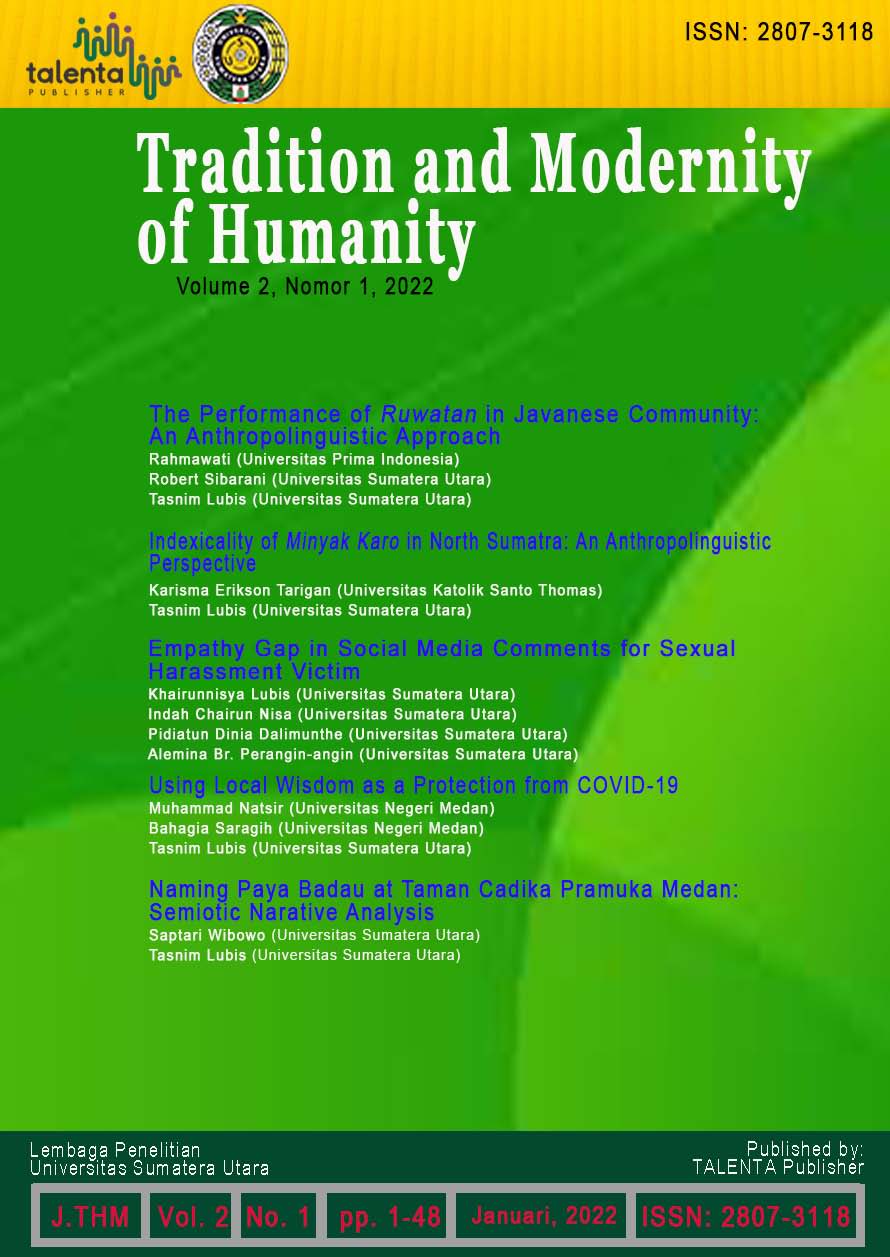Naming Paya Badau at Taman Cadika Pramuka Medan: Semiotic Narative Analysis
DOI:
https://doi.org/10.32734/tmh.v2i1.8513Keywords:
Naming, Semiotic narrative analysis, Paya BadauAbstract
This study aimed to investigate and reveal the spoken myths and verbal stories conveyed by the locals and how such social phenomena have constructed the existing local wisdom at Taman Cadika Pramuka (TCP) Medan. A descriptive qualitative method with narrative semiotics was applied in this study as one of the semiotics approaches. It focused on the narrative in the form of myths and verbal stories (folklore). Therefore, the data were obtained through both fieldwork and library study. They were collected through observation, documents, and interviews about the raised question addressed to the name of Paya Badau. The applied narrative semiotic as one of the semiotic approaches has enabled the writer to find and reveal five existing myths and verbal stories of 'Paya Badau' attributed as the given name of the lake at Cadika park which has brought up some certain positive effects toward the sustainability of the ecosystem. The existence of TCP and its lake, called 'Danau Cadika' (Paya Badau) merely remains significant as a protective green open space (GOS), besides its other functions as one of the flood buffer zones, and seeding centre of rare plants and trees in Medan. Furthermore, the issue of 'Paya Badau' will turn out to be a critical 'sign' for the authorized officers in charge (government), when the water level of the lake raises or overflow after rain. The name has successfully built a harmonious bond of community awareness to protect and conserve TCP as one of the most worthy mutual assets among stakeholders (community, government, private, etc.).
Downloads
Downloads
Published
Issue
Section
License
Copyright (c) 2022 Tradition and Modernity of Humanity

This work is licensed under a Creative Commons Attribution-ShareAlike 4.0 International License.






